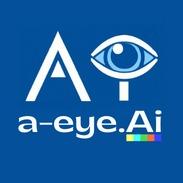a-eye.ai
An AI to take care of your eye.
The problem a-eye.ai solves
In the Rapid Assessment of Avoidable Blindness Survey, Nepal found that the prevalence of blindness was 0.35%. Despite the expansion of eye health services, preventable and correctable conditions such as cataracts remain the leading causes of blindness in Nepal. The main reasons behind blindness in Nepal are illiteracy leading to a lack of or delayed uptake of health services, poverty (19% below the poverty line), and lack of ophthalmologists (240 in the whole country). Due to these problems, people with low income in rural areas usually have to wait for a free healthcare program to get their eyes checked. But, the eye being such a sensitive organ, diseases can cause serious damage to it within months.
A-eye.ai aims to solve these problems by providing a cheap yet scalable infrastructure linking local health workers and experts. The service is provided through a website. A worker in a local health post gets an account in which he/she can upload a fundus image of eye along with the detail of the person. The data is passed through the AI model which classifies it as one of the diseases or normal along with the risk percentage. The data collected from all the health posts, ranked in the order of risk, is made available through a dashboard to an eye specialist. The eye specialist can then examine the image and send a report without having to be physically present with the patient.
See the magic? No? Let's see how each problem is solved.
Lack of Doctors: Our AI model takes the load off ophthalmologists by generating the risk percentage so that doctors will only have to check high-risk images only.
Lack of routine checkup: Only a fundus camera (can be sponsored by local government) and a person to click and upload the image is needed. So, no need to wait for a health checkup program.
Lack of checkups due to poverty: The model costs only about Rs2-3 per call.
More Magic:
The data collected can be used to retrain the model and will be valuable for designing health policies.
Challenges we ran into
Data caused a lot of trouble. Initially, we used data from a single source, training with this data gave low accuracy. After realizing the problem, we combined data from multiple sources. The accuracy increased but still was not enough. Playing with the data, we realized the diagnosis and final label did not match the dataset -- the data was mislabeled. So, we wrote code to identify keywords that come up in the diagnosis of each disease and generated the labels based on those. Finally (finally !), reasonable accuracy was obtained.
Technologies used
